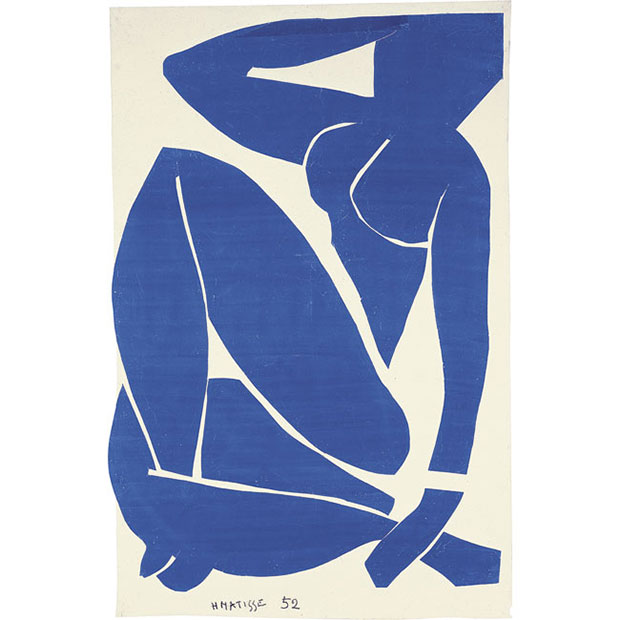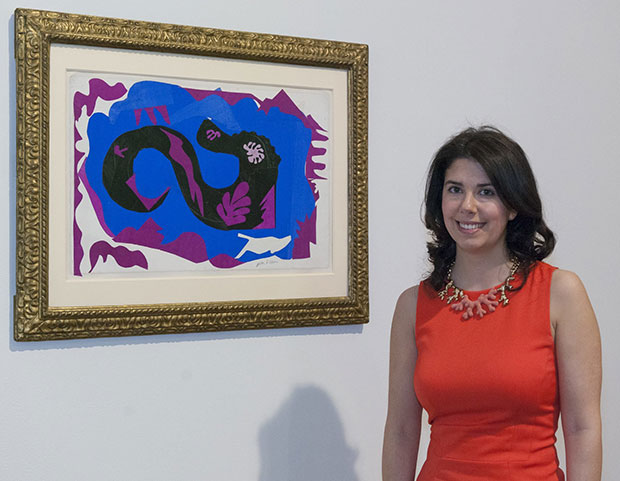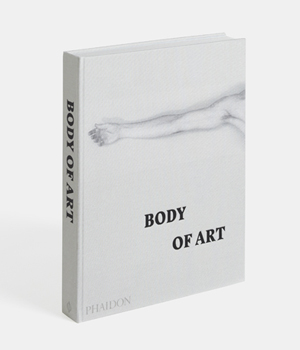
My Body of Art - Flavia Frigeri on Blue Nude III
We ask prominent artists, curators, collectors and academics to talk about how an artist's work affected their work. Today Tate Matisse Cut-Outs curator Flavia Frigeri discusses Matisse's Blue Nude III as featured in Body of Art
This week we're excited and proud to be publishing one of the most eagerly awaited and important books in Phaidon's illustrious history. It's called Body of Art and it's unique in being much more than just a book of figurative works. Rather, it offers a look at the way the human body has informed art and been manipulated by artists across cultures and throughout time. It’s not a chronological history but a highly topical look at how the body and art have merged to express a variety of messages, including themes of power, identity, beauty, emotion, gender and absence. The selection of the works included has been intrepid, and may be controversial to some, but we really believe it will prompt a dialogue about the human experience that is intellectually engrossing and intrinsically newsworthy.
The conversation has already started. So, in the coming weeks and months, with our friends over at Artspace, we will be bringing you some thoughts and views on the work contained in the book and how that work has impacted on the countless inspired and inspring artists we at Phaidon have worked with over the years. You'll hear from artists as diverse as Luc Tuymans and Zhang Huan on how they've incorporated and made the body the core of their work. You'll hear from authors Judith Zilczer and David Carier about how the body ingnited a love of art in their formative years and you'll hear how an appreciation of the human body shaped the work of photographers as diverse as Tina Barney and Joel Meyerowitz. All in all it will add up to a recognition of the importance the human body has played to art, artists and the wider art world over millennia.
We begin today with the thoughts of Tate Curator Flavia Frigeri, the woman behind the biggest show in the Tate's history, Mattise The Cut-Outs and her thoughts on - what else - Matisse's Blue Nude III, just one of the many works featured in Body of Art.

You may already know that this particular piece is one of a series of four nudes that Henri Matisse made in the spring of 1952, each a simplified silhouette in blue showing a woman with her arm crooked behind her head. Large sheets of paper were painted by Matisse's assistants in single shades of gouche paint. Once they were dry, Matisse would cut the sheets into shapes before his assistants, under his instruction, fastened them to the wall of his studio with pins, positioning the painted paper in the patterns he desired. The cut-outs re-energised Matisse in his final years when, after a botched operation and with failing eyesight, he was confined to his wheelchair and bed.
More importantly, perhaps, they also answered one of the central questions of Matisse's own artistic life; how to seamlessly combine line with colour. They allowed him, in essence, to 'draw' directly into the colour in a process he described as 'painting with scissors'.
We asked Flavia Frigeri about the moment that The Blue Nudes arrived at the Tate show she was curating in 2014.
"It was really exciting when they arrived. I had seen the four of them at an exhibition a year or two before our show in Paris. But they were on one wall; they were quite tight together at that point. The emphasis wasn’t so much on them as protagonists. They were part of a larger show with many other things. And when they arrived at the Tate, because we had a whole room just for them (and the very early sculptures he made in the 1910s), it was so exciting because you slowly began to realise how they dominate a space on their own. They can dominate even a huge room with their power and ability to take over a space.

"The interesting thing about The Blue Nudes, is that he was making them at what was a very physically challenging time for him," Flavia went on. "So they became, in many ways, the limits he was facing with his own body and they became his strength in tying together all of the things he’d believed in and had done before.
"The Blue Nudes are the absolute summation of everything he had done. The body, the female figure, the line, the colour and the sculpture – but by that point so stripped down that it’s kind of the ultimate or peak of what he could have ever done in that form.
"That’s why I think they’ve also become very iconic. With his work before that the body was still voluptuous - it was still very feminine - whereas in The Blue Nudes they’re almost these genderless figures. They are so … essential. But it’s the kind of ‘essential’ that you can only reach once you’ve done everything else. Once you’ve drawn for years, once you’ve painted for years, once you’ve sculpted for many years - it’s only then that the Blue Nudes can happen."
Stay tuned to Phaidon.com and Artspace for more interviews on and around Body of Art And take a look at the book in our store now.